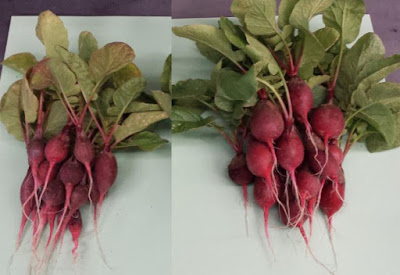A 'bionic leaf' could help feed the world by generating fertilizer from bacteria
by noreply@blogger.com (brian wang) from NextBigFuture.com on (#2J27P)
In the second half of the 20th century, the mass use of fertilizer was part of an agricultural boom called the "green revolution" that was largely credited with averting a global food crisis. Now, the challenge of feeding the world looms again as the population continues to balloon. To help spur the next agricultural revolution, researchers have invented a "bionic" leaf that uses bacteria, sunlight, water and air to make fertilizer in the very soil where crops are grown.
The team will present the work today at the 253rd National Meeting & Exposition of the American Chemical Society (ACS). ACS, the world's largest scientific society, is holding the meeting here through Thursday. It features more than 14,000 presentations on a wide range of science topics.
"When you have a large centralized process and a massive infrastructure, you can easily make and deliver fertilizer," Daniel Nocera, Ph.D., says. "But if I said that now you've got to do it in a village in India onsite with dirty water -- forget it. Poorer countries in the emerging world don't always have the resources to do this. We should be thinking of a distributed system because that's where it's really needed."
 Radishes on the right were grown with the help of a bionic leaf that produces fertilizer with bacteria, sunlight, water and air
Radishes on the right were grown with the help of a bionic leaf that produces fertilizer with bacteria, sunlight, water and air
Read more










The team will present the work today at the 253rd National Meeting & Exposition of the American Chemical Society (ACS). ACS, the world's largest scientific society, is holding the meeting here through Thursday. It features more than 14,000 presentations on a wide range of science topics.
"When you have a large centralized process and a massive infrastructure, you can easily make and deliver fertilizer," Daniel Nocera, Ph.D., says. "But if I said that now you've got to do it in a village in India onsite with dirty water -- forget it. Poorer countries in the emerging world don't always have the resources to do this. We should be thinking of a distributed system because that's where it's really needed."
 Radishes on the right were grown with the help of a bionic leaf that produces fertilizer with bacteria, sunlight, water and air
Radishes on the right were grown with the help of a bionic leaf that produces fertilizer with bacteria, sunlight, water and airRead more